Whale sharks, are they whales? Are they sharks? This amazing creature is actually a shark. They call it a whale shark due to its enormous size and because sharks are fish, the whale shark is the largest fish in the world! Let’s look at some incredible facts about the whale shark:

1. The Largest Recorded Whale Shark was the Length of a Bowling Alley!
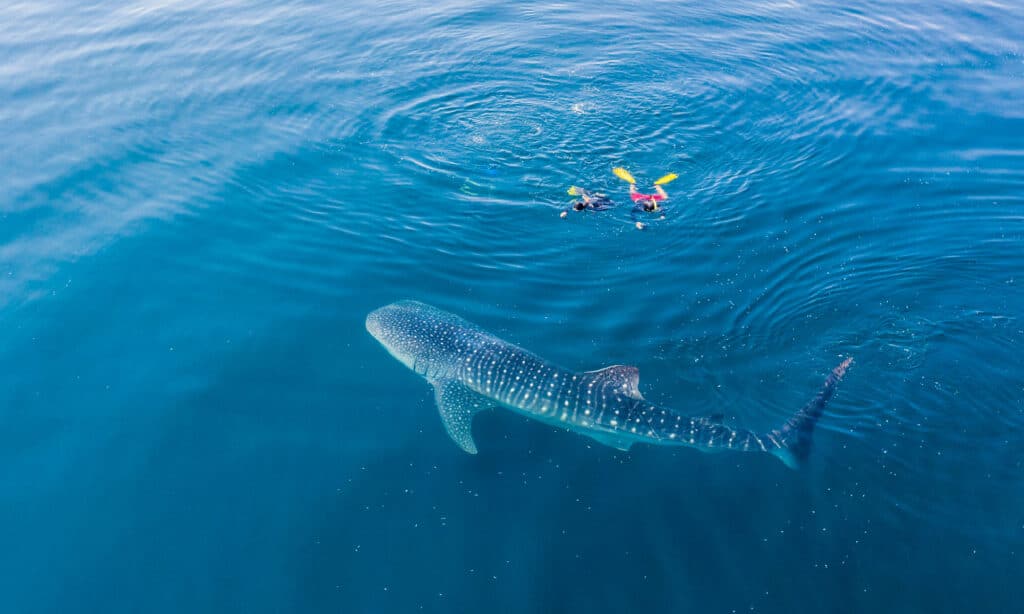
©iStock.com/Velvetfish
A regulation bowling alley is 60 feet long. The largest recorded whale shark came in at 61.7 feet. Can you imagine a giant shark in the lane next to yours? While most whale sharks are not that long, the average ones are still around 40 feet. Next time you pass a school bus you can compare that to the length of a whale shark.
2. Whale Sharks Swim About 3mph

Whale sharks are still slow swimmers compared to most sharks and at 3mph they would just beat a tortoise whose top speed is .63 mph.
©Katja Tsvetkova/Shutterstock.com
You may be familiar with the Tortoise and the Hare, but what if a Tortoise raced a whale shark? Well, the whale shark would most likely win unless he got very distracted. Whale sharks are still slow swimmers compared to most sharks and at 3mph they would just beat a tortoise whose top speed is .63 mph.
3. Two Whale Sharks Were Shipped by UPS

The two female whale sharks were around 13 feet long each and had to be transported in special containers to mimic the conditions of the ocean.
©Isaac Mok/Shutterstock.com
In 2006, two whale sharks were shipped by UPS from Taiwan to Atlanta’s Georgia Aquarium. The two female whale sharks (Alice and Trixie) were around 13 feet long each and had to be transported in special containers to mimic the conditions of the ocean. A team of vets from the Aquarium watched over the sharks on the flight to take care of them and make sure the transition went smoothly. In 2007 two more whale sharks, this time two males (Yushon and Taroko), were flown over in a similar fashion with no issues.
4. A Whale Shark was Found with 300 Pups
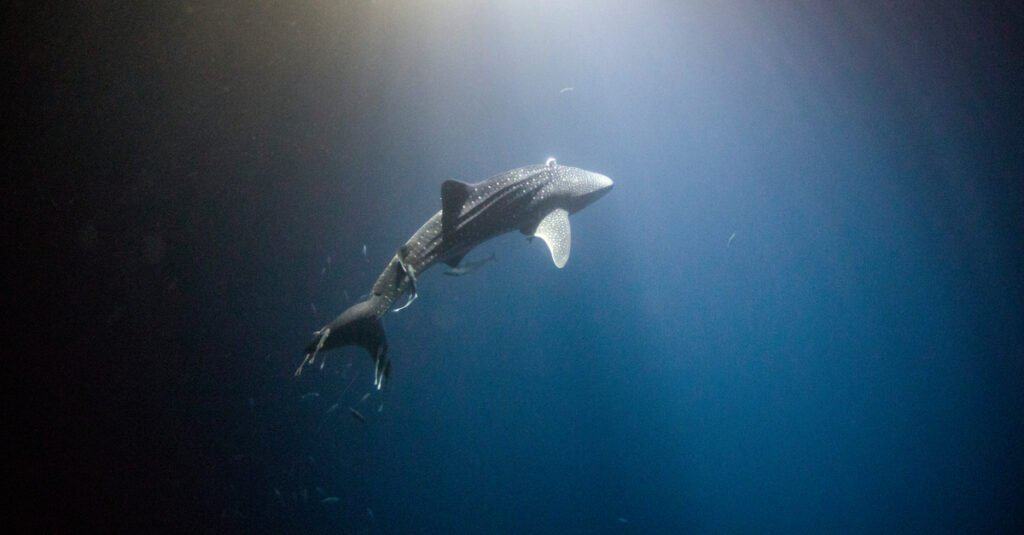
Scientists speculate that live babies are released over a long period of time vs. all at once.
©Lindsey Lu/Shutterstock.com
The reproductive habits of whale sharks are still being studied, but there is a confirmed case of a pregnant whale shark that was caught near Taiwan in 1995. Upon examination, scientists found 300 pups. Whale sharks are similar to other sharks in that they are ovoviviparous, their eggs are fertilized internally, then they hatch inside the female, and then are delivered by live birth. Scientists speculate that live babies are released over a long period of time vs. all at once.
5. Whale Sharks Have the Largest Eggs, Twice as Big as an Ostrich Egg
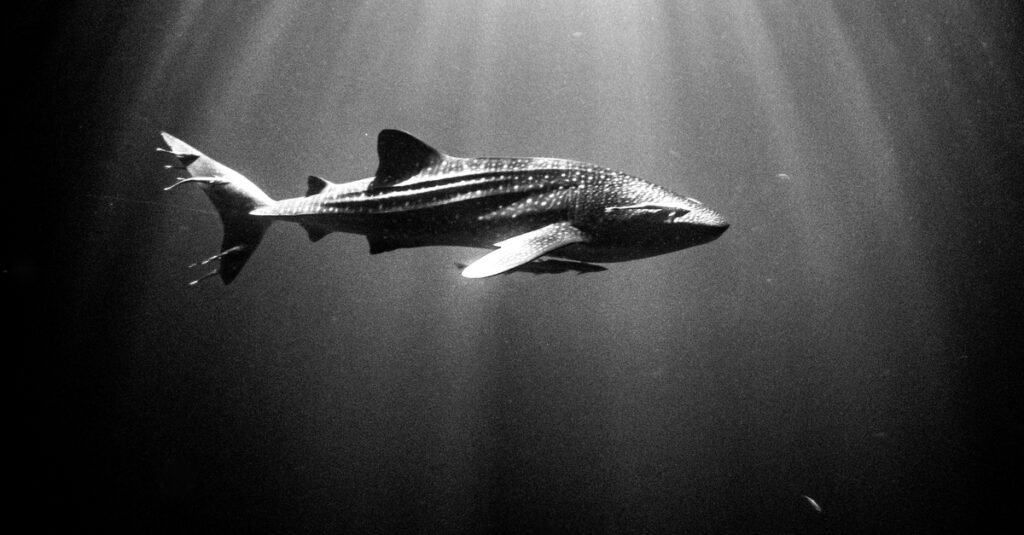
The eggs remain inside the female during growth and hatch inside the female.
©Lindsey Lu/Shutterstock.com
Ostriches produce the largest eggs for land animals, their eggs can reach 6 inches long by 5 inches wide. Whale shark eggs are about twice that big. The eggs remain inside the female during growth and hatch inside the female, but there has been evidence of whale shark eggs being found. One found in the Gulf of Mexico was 12 inches long and 5 ½ inches wide.
6. This Big Shark has Over 3000 Tiny Teeth
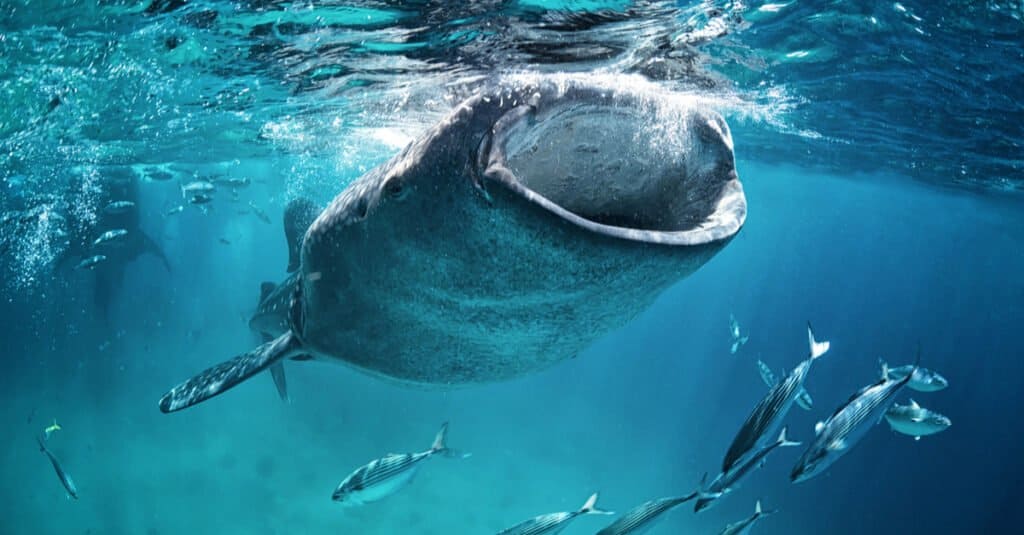
Whale sharks are filter-feeders, sifting the nutrients from the water, so they don’t use their teeth at all for eating.
©Fata Morgana by Andrew Marriott/Shutterstock.com
Whale sharks have row after row after row of tiny little teeth, 300 rows on average. The teeth are about the size of the tip of a pencil (would not make a very impressive shark-tooth necklace.) But because whale sharks are filter-feeders, sifting the nutrients from the water, they don’t use their teeth at all for eating. Scientists are not sure of their purpose.
7. A Whale Shark’s Mouth Can be Over 4 Feet Wide

Whale sharks swim slowly with their large mouth open, sifting through the water for plankton, small shrimp, and small fish.
©Andrea Izzotti/Shutterstock.com
Talk about a funnel, the whale shark’s mouth can be 4 or more feet wide, but its throat is only the size of a quarter. So no need to worry about getting swallowed up by that gaping mouth. Whale sharks swim slowly with their large mouth open, sifting through the water for plankton, small shrimp, and small fish. Their gills act as a suction to draw the food in. It is amazing how an animal that weighs 41,000 lbs can support itself on this simple diet.
8. Whale Sharks are Believed to Have Life Spans Similar to Humans
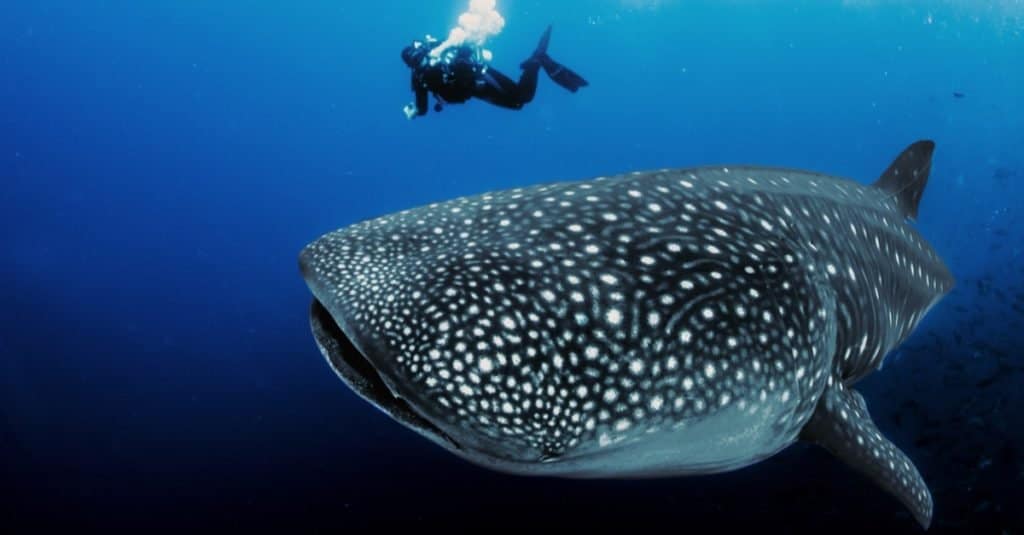
Each whale shark has its own unique pattern of spots, much like human fingerprints.
©Lindsey Lu/Shutterstock.com
Whale sharks are believed to have a life span similar to humans, ranging from 70-100 years, but some believe they could live even longer. Marine Biologists are trying to study how long whale sharks can survive in captivity. Alice, who was one of the whale sharks brought to the Georgia Aquarium, recently died (June 2021) after living there for more than 15 years. Some people are against keeping whale sharks in captivity because they can’t mimic their natural habitat, while others believe it is an important piece in educating humans about sharks in order to protect them from extinction.
9. The Longest Migration Recorded for a Whale Shark Was a 12,000-mile Trip
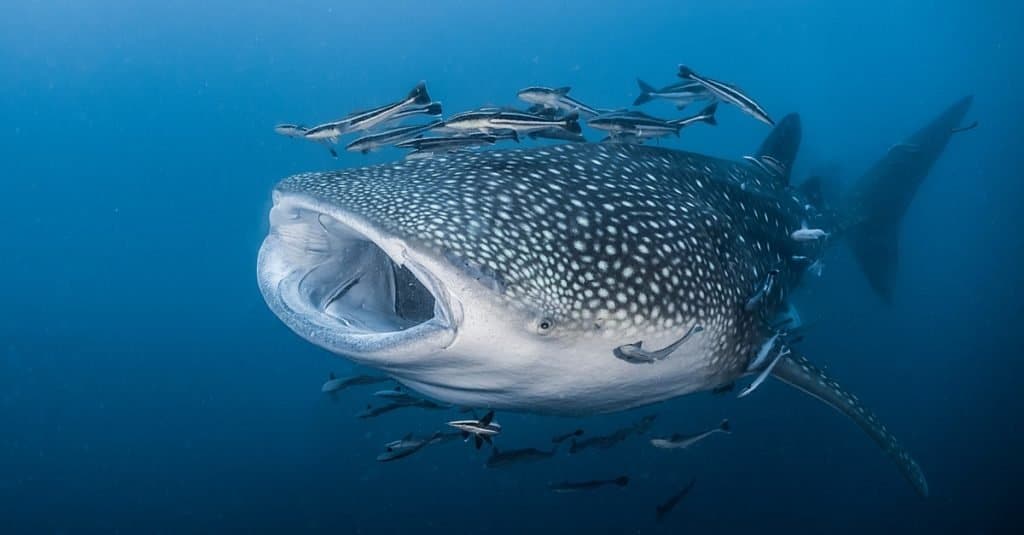
The most common place for whale sharks to hang out was an area near the coast of Louisiana.
©Onusa Putapitak/Shutterstock.com
If you fly from New York to L.A. it is about 2,800 miles. A group of scientists tagged a whale in the Pacific Ocean near Panama and recorded its travels all the way to the Philippines. That is like going from New York to L.A. and back, twice! This shark’s trip was spread out over 841 days, which averages 14.3 miles/day. One Scientist, Eric Hoffmayer, wanted to study the typical migratory habits of the whale shark. His team tagged 42 sharks in the Gulf of Mexico and tracked their movements by satellite for a year. They were able to plot their movements and see where and when they traveled. In this study it was interesting to find that none of the sharks left the Gulf of Mexico. The most common place for them to hang out was an area near the coast of Louisiana.
10. Whale Sharks Can Swim a Mile Deep

The current record for the deepest dive by a fish is held by a whale shark at 1.20 miles.
©Chaton Chokpatara/Shutterstock.com
They clearly have an unfair advantage over Marco Polo! The current record for the deepest dive by a fish is held by a whale shark at 1,928m (1.20 miles). Think about a track with an outside lane of water. That whale shark swam around the equivalent of four times, but straight down!
Summary of 10 Incredible Whale Shark Facts
| Number | Incredible Whale Shark Facts |
|---|---|
| 1 | They can grow longer than a bowling alley – up to 61.7 feet |
| 2 | They swim about 3 mph |
| 3 | Two were shipped by UPS |
| 4 | They are prolific reproducers |
| 5 | Their eggs are twice the size of an ostrich’s |
| 6 | Whale sharks can have as many as 3,000 teeth |
| 7 | Their mouths can be as wide as 4 feet |
| 8 | Whale sharks are believed to be able to live 100 years or longer |
| 9 | A whale shark once completed a 12,000 mile trip |
| 10 | They can swim a mile deep |
The photo featured at the top of this post is © Onusa Putapitak/Shutterstock.com
Thank you for reading! Have some feedback for us? Contact the AZ Animals editorial team.






